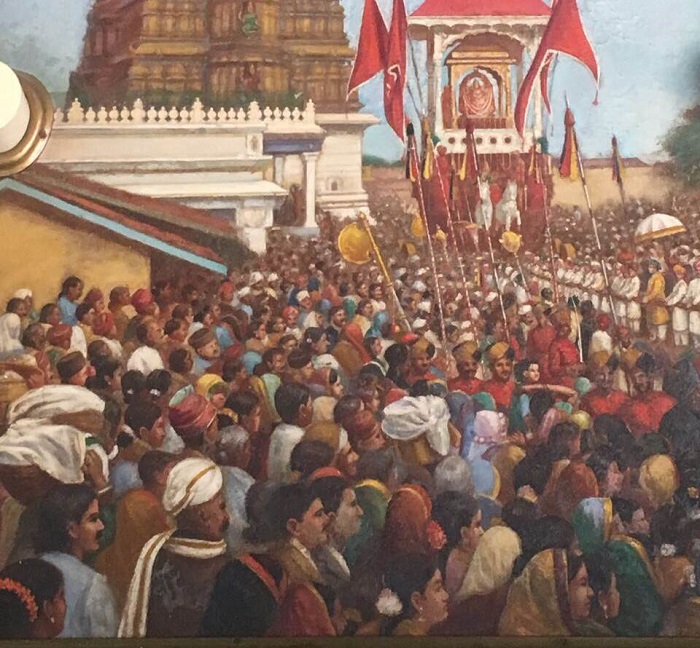कल जब घर से निकलना तो कुछ मत बोलना, सच तो बिल्कुल नहीं। ये पुराना वाला इंडिया ही है, इसे सच से एलर्जी है। इसके लिए सच वो कीड़ा है जो एक दिन अजगर बन कर तुमको ही निगल लेगा। ये नया इंडिया भी है, यहाँ सच का डेमोनेटाइज़ेशन हो चुका है। सच लीगल टेंडर नहीं रहा। यहाँ झूठ के अलग अलग ठेकेदार हैं, सबका अपना अपना यू.पी.आई. है। किसी के साथ भी खाता खोलो और झूठ के लेन-देन में शुरू हो जाओ। महफूज़ रहो।
कल जब घर से निकलना तो चुप रहना। कल जब बाज़ार में कोई जेब काट ले, दो गालियाँ परोस दे, धक्का दे दे, या सामने से आकर घूँसा ही बरसा दे, चुप रहना। ये वही पुराना इंडिया है, ये घर में घुसकर मुसलमानों को मारता है, ये बाहर निकलकर हिंदुओं को जलाता है। यहाँ आज भी वो सब मुमकिन है जो पहले मुमकिन था। ये नया इंडिया भी है, ये अब मारते वक़्त रिकॉर्डिंग भी करता है और 4जी स्पीड पर लाइव स्ट्रीमिंग भी क्योंकि ये इंडिया एक भीड़ है, कभी हिंदुओं की भीड़ तो कभी मुसलमानों की भीड़। इस भीड़ का कोई चेहरा नहीं, सिर्फ मज़हब और जात होता है। इस भीड़ को सबूत होते हुए भी गिरफ्तार नहीं किया जा सकता। भेड़ियों की भीड़ में तुम जज़्बाती मेमने – चुप रहना। आज ज़्यादा मिमियाओगे तो फिर कभी नहीं मिमिया पाओगे। शाम को घर वापस आ जाना, बिना कोई नयी दुश्मनी मोल लिये। समाज को ठीक करने की ज़िम्मेदारी जिसे दी थी वो बैट लेकर समाज को पीट रहा है। तुम कौन से समाज-सुधारक बनने निकले हो? चुप रहना सीखो, आदत डालो, आईने के सामने ख़ामोशी की प्रैक्टिस करो।
ये सब इसलिए बता रहा हूँ कि कल जब घर से निकलो तो लिंच न हो जाओ। हो सके तो भीड़ का साथ दे देना, उसमें सेफ्टी है। लिंच करने वालों में शामिल हो जाना, लिंच होने वाले तो कमज़ोर होते हैं। असली इंडियन लिंच करता है, होता नहीं। इससे पहले कि कल किसी लिंच मॉब के हाथों तुम्हारा फ्री एकाउंट खत्म कर दिया जाए, आज किसी लिंच मॉब के पेड सब्सक्राइबर बन जाओ। ये नया इंडिया है, पुराने इंडिया वाले अपने बाप वाली गलती को मत दोहराना। वो मेम्बरशिप टालता रहा, इसलिए लिंच हो गया।
और तुम – जो आज अपने घर वापस नहीं जा पाओगे, कहीं किसी चौराहे पर लिंच कर दिए जाओगे, मुझे माफ कर देना। मुझे ये हिदायतें आज सूझीं, वरना शायद तुम्हारी मदद कर सकता। पर ये सिर्फ हिदायतें हैं, इनसे किसी की जान बच जाये, ये ज़रूरी नहीं। वैधानिक चेतावनियाँ जारी करने का अधिकार सिर्फ सरकार को है, उसी सरकार को जो वैधानिक शराब का ठेका चलाती है। मेरी बातों को कौन मानेगा? मैंने तो कभी एक पान भी नहीं बेचा। सो तुम चिंता मत करो, ये नया इंडिया है। तुम कोई आखिरी लिंच होने वाले इंसान नहीं हो। लिंचिंग वायरल हो चुका है। वो भी ऑर्गनिकली। बस ऊपर जाकर न्यू इंडिया वाले चैनल को सब्सक्राइब कर लेना। सारे लिंच अप्डेट्स मिलते रहेंगे।
अल्लाहू अकबर। जय श्री राम।





